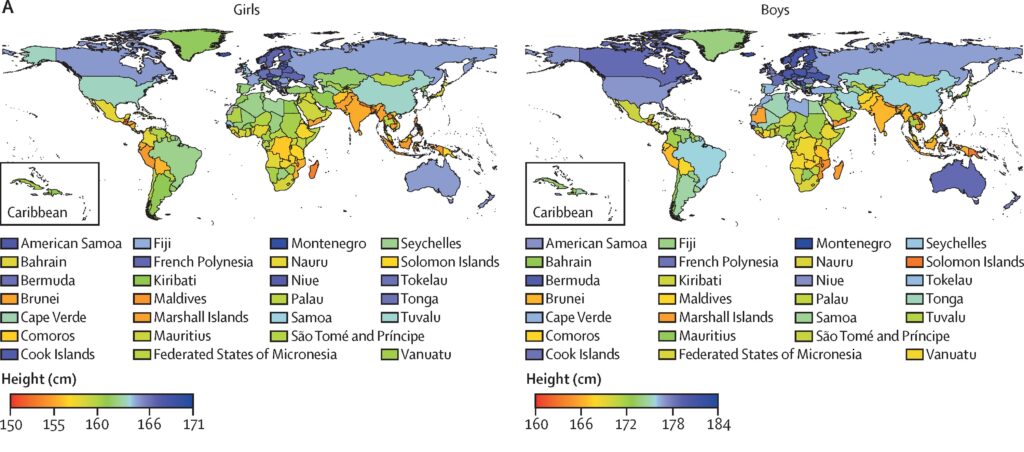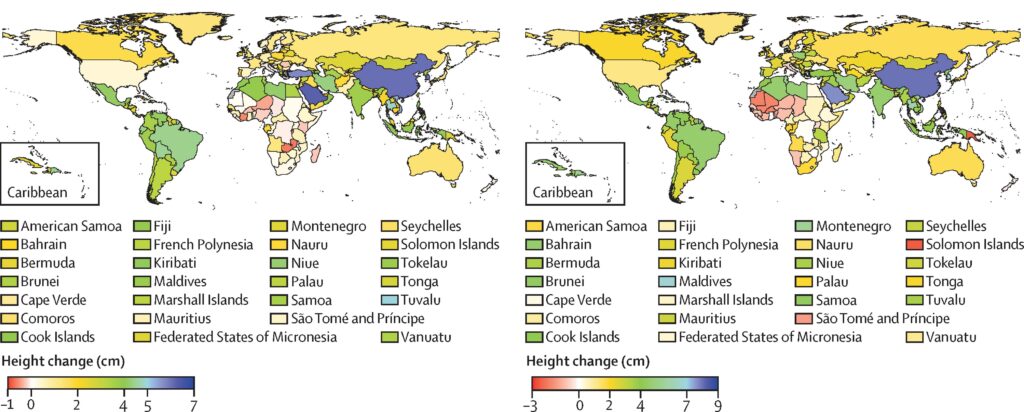A global study, involving hundreds of researchers and published in The Lancet, one of the world’s oldest general medical journals, shows that in 2019, the 19-year-old boys who were on average the tallest in the world, lived in the Netherlands, Montenegro and Estonia.
The scientists behind the study pooled over 2,000 population-based measurement surveys and studies, with anthropometric measurements on 50 million people aged 5–19 years and 15 million people aged 20–30 years.
The researchers used at least one data source for 193 of 200 countries and territories for which estimates were made, covering 98.7% of the world’s population in 2019 and at least two data sources for 177 countries, covering 98.0% of the world’s population.
Accordingly, in 2019, the 19-year-olds who were on average the tallest in the world lived in northwestern and central European countries: the Netherlands (mean height 183.8 cm), followed by Montenegro, Estonia (183.1 cm) and Bosnia and Herzegovina for boys; and the Netherlands (170.4 cm), Montenegro, Denmark and Iceland for girls. The average height of Estonian 19-year-old girls in 2019 was 168.8 cm.

The 19-year-olds who were on average the shortest in 2019 lived in south and southeast Asia, Latin America, and east Africa: Timor-Leste (160.1 cm), followed by Laos, Solomon Islands and Papua New Guinea for boys; and Guatemala (150.9 cm), Bangladesh, Nepal and Timor-Leste for girls.
The largest gains in height now in China and South Korea
The study said that although northwestern European children and adolescents were on average the tallest in the world in 2019, much of this advantage was achieved before the late 20th century, and many of these countries had below median height change from 1985 to 2019.
“By contrast, central European countries such as Montenegro and Poland achieved a substantial part of their height advantage since 1985, especially in boys,” the study said. “However, the largest gains in height over the past three and a half decades were those in some emerging economies, including China (largest gain for boys and third largest for girls) and South Korea (third largest for boys and second largest for girls), and through parts of southeast Asia, the Middle East and north Africa, and Latin America and the Caribbean”.

The Lancet is a weekly peer-reviewed general medical journal, with editorial offices in London, New York and Beijing. It is among the world’s oldest and best-known general medical journals. It was founded in 1823 by Thomas Wakley, an English surgeon who named it after the surgical instrument called a lancet (scalpel), as well as after the architectural term lancet window, a window with a sharp pointed arch, to indicate the “light of wisdom” or “to let in light”.
Cover: A group of Estonian male students. The image is illustrative. Photo by Erlend Štaub.

